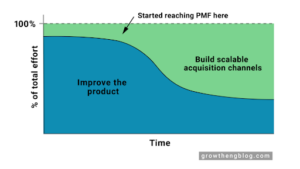With the volume of data that businesses today are generating, there is no longer a need to rely on sheer instinct or even standard practices when making business decisions. Data-driven companies are continuing to stand out from their competition and any business that is not leveraging their data — from customers, ecommerce, digital marketing, etc. — is leaving an opportunity on the table.
Business intelligence is the process that allows you to turn the data you collect into actionable insights by way of specific software programs, known as business intelligence (BI) tools. Without a well-conceived business intelligence strategy and the right BI tools, making data-informed choices can be difficult, if not impossible. Data extraction, data visualization, and data transformation are all important parts of the business intelligence process, so you can turn raw data into charts, graphs, and dashboards that decision-makers within the company can grasp, without relying on translation from data analysts or other specialists.
The role of a data warehouse in business intelligence may not be immediately obvious, but data warehousing and business intelligence go hand-in-hand.

Developing a business intelligence strategy
Why do businesses need a business intelligence strategy? Developing a business intelligence strategy is an effective way to ensure a foundation for impactful data analysis. In fact, according to CIO.com, 94% of surveyed business leaders say their company’s business increased after implementing their business intelligence strategy. While it may seem simpler to choose a BI tool and hope that it will do what you need, that selection process will actually be easier with a concrete strategy in place first.
There are a number of things to keep in mind when developing a business intelligence strategy, including but not limited to:
-
What specific data and trends you want to measure — Of course you’ll want to know what you’re measuring. Having an idea of what kinds of data you’re already collecting, and what you may need to add, can be helpful.
-
KPIs and industry trends to measure against — Business intelligence strategies are not only about measuring what has happened, but also about forecasting into the future. Knowing what you’re measuring and what you can compare against, both internally and externally, is critical.
-
Who key stakeholders are and how best to deliver information to them — Identifying stakeholders may seem obvious, but it is also important to keep in mind that not all stakeholders will need or want the same data. A team from RevOps will have very different needs from the stakeholders in HR, who will need something entirely different from investors or clients. Some stakeholders might be used to getting their hands directly in the data in a tool like Google Sheets or Excel. Other might have less experience and will want to rely more on well-visualized data, not spreadsheets. Your BI strategy should be able to address each of these needs separately.
-
How to make data both secure and accessible to the right teams — The best business intelligence and data strategies democratize data, making it easy to access and leverage for as many people as possible, so lack of access to information is not standing in the way of impactful action. At the same time, your strategy should indicate how sensitive data is being stored and how data access is limited only to those teams that need to know.
Using a data warehouse for business intelligence
A strong business intelligence strategy includes Implementing a data warehouse. This is a place to centralize and standardize your data, organizing it for analysis.
Part of this decision should include how you’re going to get your data into your warehouse. You are likely collecting data from many different sources like marketing tools, ecommerce, production databases, and advertising platforms that come in many different formats. A data warehouse can not only store this data, but with the right complementary data integration tools can make sure the data is clean, deduplicated, and usable. In addition, a data warehouse, such as a Snowflake data warehouse, can be a boon to data security, making sure that it’s easy to delete sensitive customer data as needed and control access to data easily.
This process sounds complicated, but it doesn’t have to be. Providers like Mozart Data offer all-in-one solutions and data analyst support, so you don’t have to worry about your data getting to its destination and being cleaned properly.
Business intelligence tools
While a data warehouse can be an incredibly useful part of a business intelligence strategy, it is hardly the last word on BI tools and typically is not considered a BI tool in itself. Rather, BI tools are focused on data analysis and data visualization — creating those charts, graphs, and dashboards — as their primary features. Once you have developed a business intelligence framework, finding a tool to meet your needs will be much easier. For example, since you have already identified the types of reports that your stakeholders will gain most value from, you can focus your search on tools that make it easy to generate those specific reports.
Of course, you will also want to verify that your BI tool works seamlessly with your data warehouse solution. Mozart Data has chosen to partner with Snowflake for data warehousing because we know it is secure, flexible, and easy to use, no matter what BI tool you choose.
If you’re ready to take the next step and invest in a modern data platform that can support both your data warehousing and business intelligence goals, contact us.


